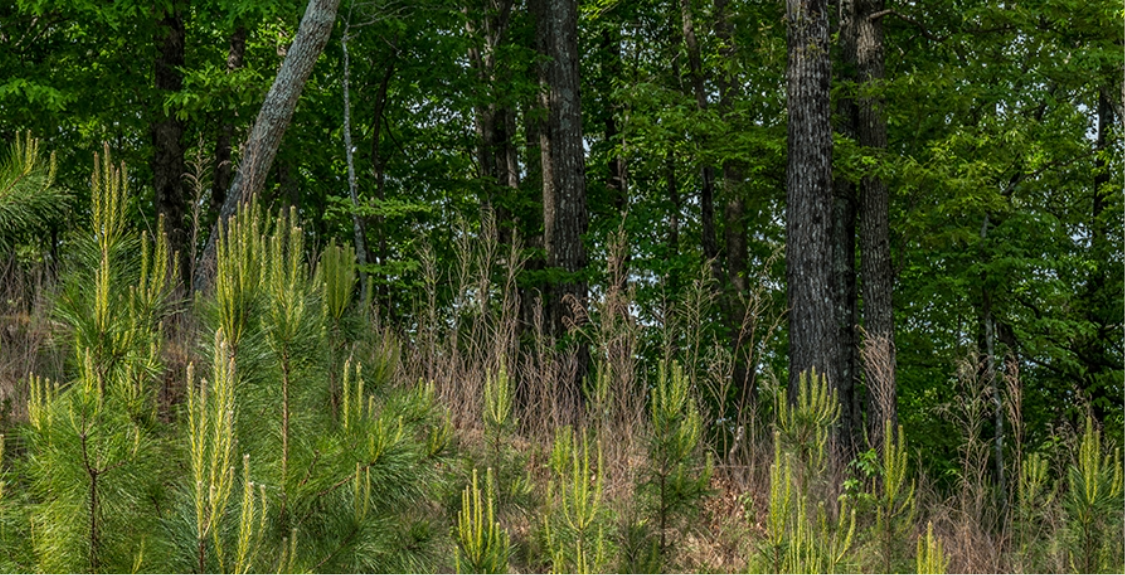AFM NEWS
Keeping Forests Working: The Stakes of Conservation Funding Cuts

By Jennifer Hunt (Content Writer) and Matt Jacobs (Region Manager)
In 1990, Congress created the Farm Bill. As part of that important legislation, the Forest Legacy Program (FLP) was established. The FLP, in conjunction with the states, uses federal dollars from the Land and Conservation Fund to buy conservation easements or, less frequently, a full title from willing landowners. By removing (and paying for) the right to convert forestland to other uses, FLP keeps “working forests” working and protects water quality, habitat, recreational access, and rural jobs. However, reduced federal funding has created concerns that projects will be delayed and not come to fruition. AFM Northeast Region Manager Matt Jacobs provides some helpful context and information about how this looks to forest professionals with boots on the ground.
In Maine, the FLP has been used as a tool to leverage other funding and purchase conservation easements on parcels where the landowners want to protect the land in perpetuity. This helps them justify large purchase prices and recoup some of that cost in an easement sale. Landowners can meet their goal of owning land while also feeling a rewarding sense of stewardship and conservation. Additionally, the FLP includes a provision to create a multi-resource management plan for the property, which is a comprehensive document that guides the landowner’s actions on their land and keeps them in alignment with the easement terms and their objectives. For instance, objectives and conservation initiatives include the following: soil and water, biological diversity, range, agroforestry, aesthetic quality and desired timber species, recreation, wood and fiber production, fish and wildlife, threatened and endangered species, forest health and invasive species, conservation-based estate planning/legacy planning information, archeological, cultural, and historic sites, wetlands, fire, carbon sequestration and climate resilience, and Forests of Recognized Importance. As these initiatives were previously funded through the FLP, the potential cancellation or removal of funds from the Inflation Reduction Act (IRA) puts current and new projects in jeopardy. Private landowners may become leery of investing the time and energy into projects only to find their funding sources diminished, and land transactions with easement sales calculated into their cash flows may be delayed or not taken up at all. IRA funding was considered a “surge” funding source, meaning that there was an increase in conservation easements as a result. It’s important to note that the baseline funding for the FLP is derived from the federal Land and Water Conservation Fund (LWCF), which brings funding stability to the program. Although some projects that were briefly stalled are still moving forward, it’s important to note that these conservation initiatives are particularly crucial in the forest products industry. Landowners can honor their desire for conservation with working land easements that support rural jobs and protect the forest products economy. By paying landowners for development rights, not timber rights, the Forest Legacy Program turns federal conservation dollars into long‑term payroll protection for rural America’s wood‑basket towns. Each easement keeps a forest in production, locks in the raw‑material base that mills and loggers need, preserves tax revenue for local governments, and often sparks complementary recreation spending. In short, FLP is as much an economic‑development tool as it is a conservation program.
Despite any setbacks, landowners are still interested in conserving their land through easements. In order to accomplish this goal, there has been an uptick in fundraising through state, nonprofit, crowdfunding, and private donations to put these projects across the finish line. However, this solution may come with stipulations to match private donors’ expectations, whereas FLP funding creates a baseline of public interests, including working forest clauses.
The future of America’s working forests relies on stable, long-term investment in conservation tools like the Forest Legacy Program. As federal dollars become less predictable, it’s encouraging to see nonprofits, private donors, and landowners stepping up. However, these efforts should supplement, not replace, consistent public funding. To ensure rural economies, healthy forests, and recreation access continue to thrive, we must keep working on forest conservation moving forward.
